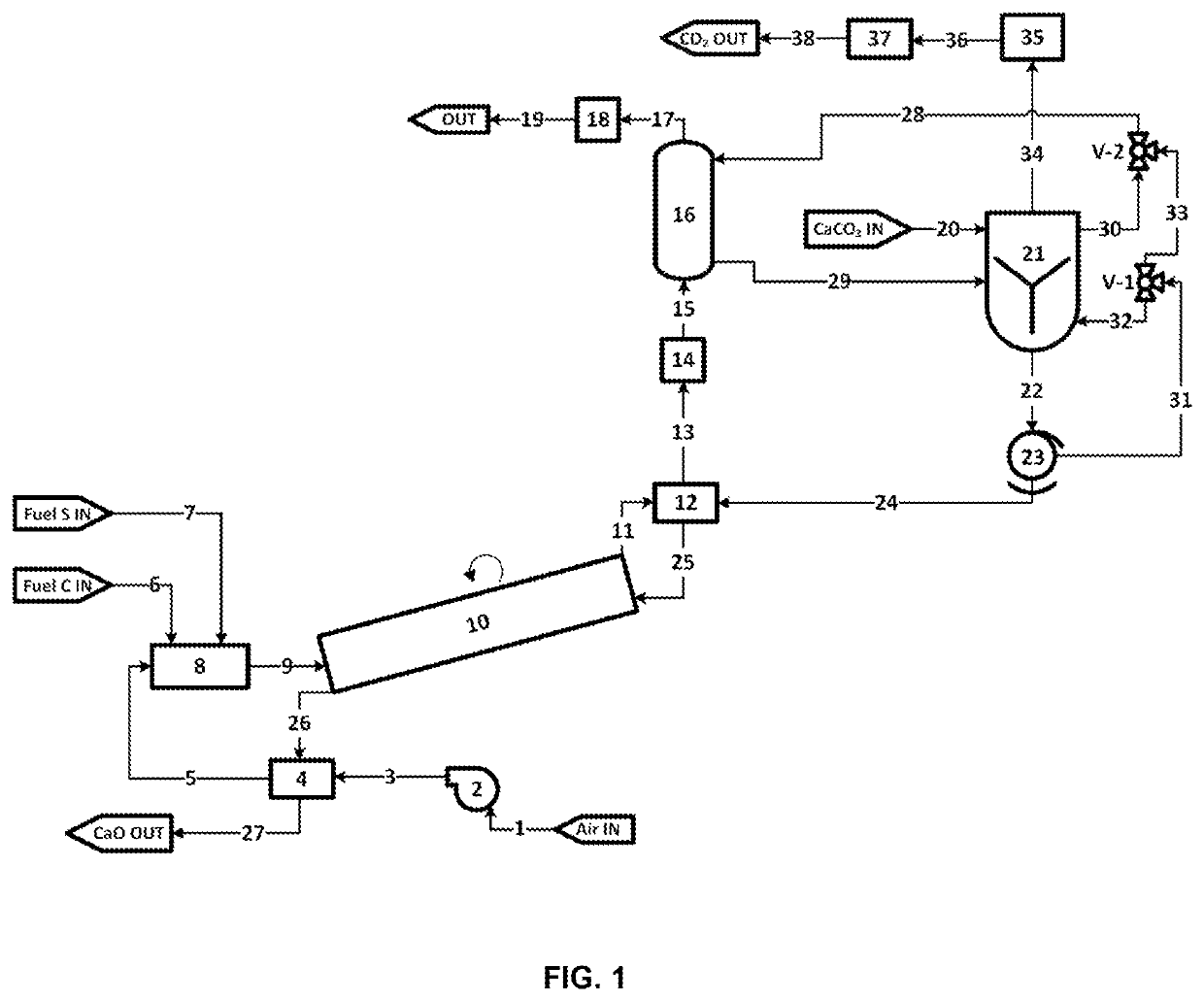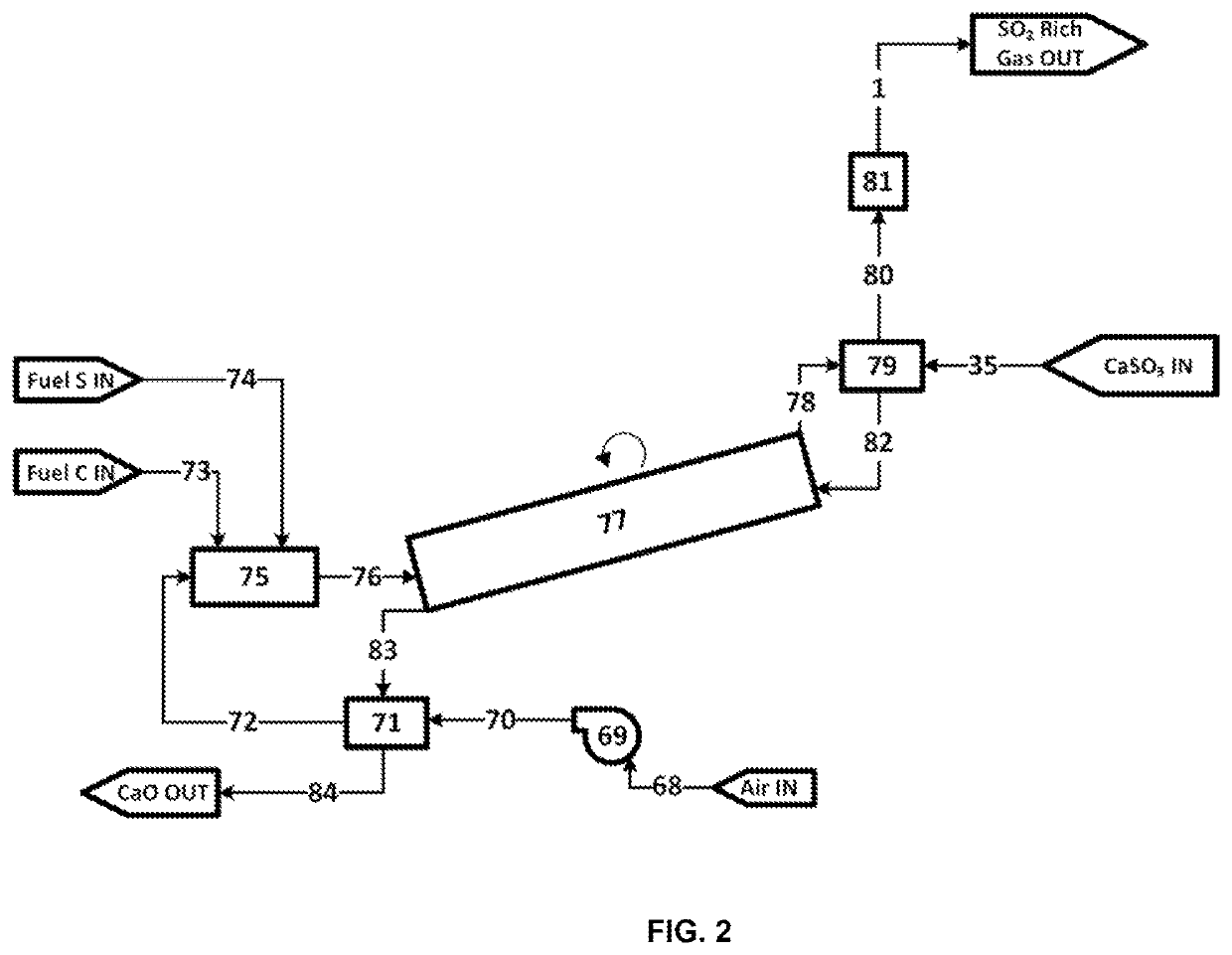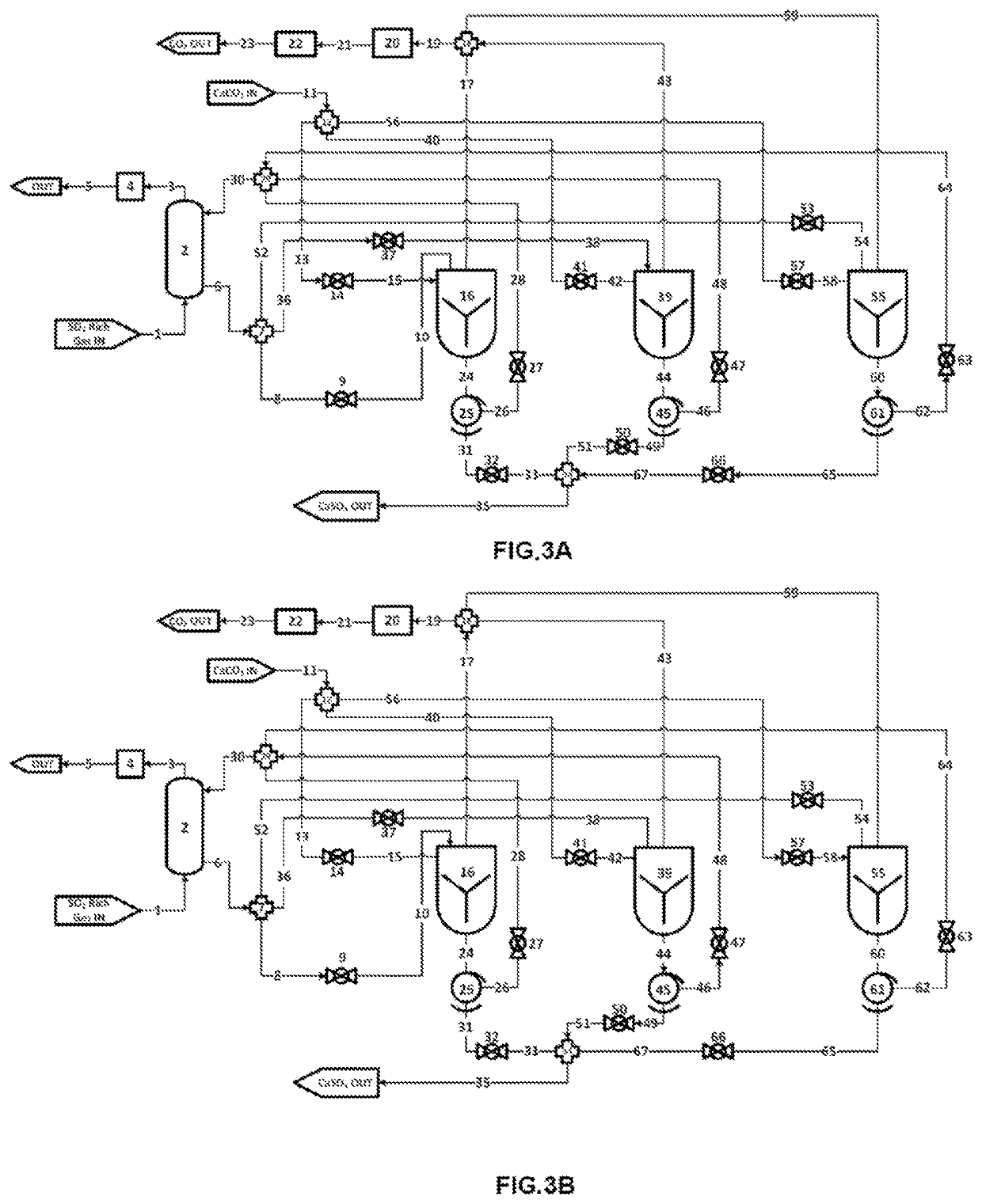Process for the production of metal oxides
a metal oxide and process technology, applied in the direction of calcium/strontium/barium oxide/hydroxide, water/sewage treatment, inorganic chemistry, etc., can solve the problems of exceeding the value of co2, requiring very high capital and operating costs, and oxidation or degradation or contamination, so as to prevent degradation or contamination of carbon dioxide, prevent oxidation, the effect of preventing oxidation
- Summary
- Abstract
- Description
- Claims
- Application Information
AI Technical Summary
Benefits of technology
Problems solved by technology
Method used
Image
Examples
example definitions
[0021]Regenerable Acid Gas or Regenerable Acid: A regenerable acid may comprise an acidic chemical which can form a salt and is capable of being regenerated from said salt into its original acidic chemical form. For example, a regenerable acid may comprise an acid which can be reacted to form a salt and can be regenerated from said salt by, for example, thermal decomposition of said salt, which may involve, for example, a gas forming decomposition. For example, a regenerable acid may comprise an acid which can be reacted to form a salt and can be regenerated from said salt by, for example, electrochemical means, which may include, but is not limited to, electrodialysis. A regenerable acid gas may be an acid which is generally at a gas phase when said acid is at an isolated state under certain conditions. Regenerable acid and regenerable acid gas may be used interchangeably. Example regenerable acid gases or acids may include, but are not limited to, one or more or a combination of t...
example exemplary embodiments and sub-embodiments
Example Exemplary Embodiments
[0142]A process for producing captured carbon dioxide comprising:
[0143]Reacting a carbonate salt with a regenerable acid gas to produce a cation-regenerable acid gas salt and gaseous carbon dioxide;
[0144]Thermally decomposing said cation-regenerable acid gas salt to produce cement, an oxide, or a combination thereof
[0145]A process for producing captured carbon dioxide comprising:
[0146]Reacting a carbonate salt with a regenerable acid gas to produce a cation-regenerable acid gas salt and gaseous carbon dioxide;
[0147]Thermally decomposing said cation-regenerable acid gas salt to produce cement, an oxide, regenerable acid gas, or a combination thereof
[0148]A process for producing captured carbon dioxide comprising:
[0149]Reacting a carbonate salt with sulfur dioxide to produce a sulfite salt and gaseous carbon dioxide;
[0150]Thermally decomposing said sulfite salt to produce cement, an oxide, or a combination thereof
[0151]A process for producing captured carb...
example embodiment 1
[0346]1. CaCO3 may be placed in a vessel or container. After a desired amount of CaCO3 is added to said vessel or container, the container may be closed. The container may be evacuated of most or all of the remaining oxygen gas or air by, for example, including, but not limited to, one or more or a combination of methods:[0347]a. Employing a vacuum pump to evacuate air or 02 from the container and reduce pressure to near vacuum[0348]b. Purging with nitrogen or other purge gas[0349]c. Introducing an amount of CH3, H2, Sulfur, H2S, or NH3 or other combustible or oxygen absorbing reagent and combusting these reagents to remove at least a portion of the O2[0350]d. Gas separation membrane to separate at least a portion of O2 from the remaining gases[0351]e. Employing an oxygen scavenger, such as, for example, iron oxides or copper or copper oxides[0352]f. Condensing a portion of the oxygen or condensing another gas to facilitate the separation of oxygen[0353]2. CaCO3+SO2⇒CaSO3+CO2[0354]3...
PUM
| Property | Measurement | Unit |
|---|---|---|
| temperature | aaaaa | aaaaa |
| temperature | aaaaa | aaaaa |
| partial pressure | aaaaa | aaaaa |
Abstract
Description
Claims
Application Information
 Login to View More
Login to View More - R&D
- Intellectual Property
- Life Sciences
- Materials
- Tech Scout
- Unparalleled Data Quality
- Higher Quality Content
- 60% Fewer Hallucinations
Browse by: Latest US Patents, China's latest patents, Technical Efficacy Thesaurus, Application Domain, Technology Topic, Popular Technical Reports.
© 2025 PatSnap. All rights reserved.Legal|Privacy policy|Modern Slavery Act Transparency Statement|Sitemap|About US| Contact US: help@patsnap.com



